Adelaide - Pasadena 5042

Remedial Massage for Headaches and Migraines
Most people have probably never considered seeing a massage therapist when they have chronic pain in their head.
Although the causes for headaches and migraines are numerous, tight, knotted muscles are much more often responsible than one might think. And if you have not found your personal triggers yet it is well worth an investigation into whether massage can be an important tool for you in managing your chronic headache condition.
Quite a few of our clients were very astonished to find out after a couple of neck and shoulder massages that their headaches had considerably reduced.
Common Causes of Muscular Strain that Leads to Pain in the Head

- Car accidents / whiplash
- Falls
- Teeth grinding / TMJ / jaw problems
- Distorted posture
- “Text neck” (neck pain from looking down at a screen)
- Spinal misalignment
- Disc problems
- Surgeries, scars
- Chronic tension due to stress
- Visual problems
- Ill fitting furniture
- Sleeping on tummy
- Playing a wind instrument or the violin
Studies about the Connection between Headaches / Migraines and Trigger Points
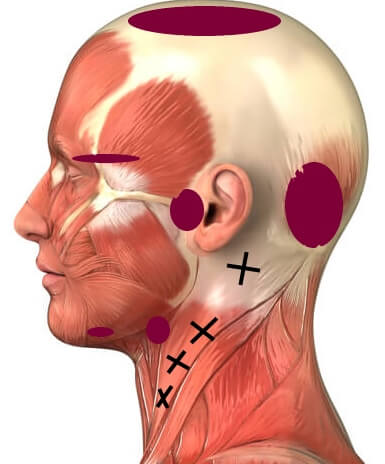
There are also several studies that indicate a correlation between so called myofascial trigger points (also known as sore spots, knots, pressure points) and migraine and tension-type headaches1.
The first of the studies mentioned below (Calandre et al. 2006) compared specific trigger points in 98 migraine patients and 32 healthy participants. A high number of these migraine triggering spots were found in the chronic pain group. By pressing on the points 30% of these migraine patients could feel the usual pain in their head and an attack was triggered.
The second study showed that treatment of the responsible trigger points reduced their sensitivity and subsequently a reduction of the patient’s migraine symptoms.
Other Symptoms Caused by these Trigger Points
The trigger points and the tense muscles that cause pain in the head can also cause a range of other unpleasant symptoms2:
- Stiffness
- Reduced range of motion
- Blurred vision
- Numbness (but often coming from a bulging disc)
- Pressure sensitive skin
- Restricted mouth opening
- Dry cough
- Ear ache
- Dizziness, disturbed balance
- Tooth pain or sensitivity
- Visual disturbance, eye problems
- Difficulty swallowing, singing, smiling
- Muscle spasm
- Ear stuffiness
Trigger Point Treatment at ToThePoint Massage
Although some of our clients can already tell where their pain causing trigger points are, when they come in for treatment, most people are not even aware that their muscles are tense. They have become so used to them over time because they (understandably) try hard to ignore their pain and all related discomfort.
There are some spots that cause a typical pain referral which are very common in the majority of sufferers. But sometimes several spots or several muscles cause the pain or dysfunction that leads to pain.
In general, we like to look at your posture before the first treatment starts. During the massage we will feel for muscular dysfunction and ask for your feedback regarding possible triggers. If necessary we will also treat muscles inside your mouth, in your face, around your jaw, in your scalp and in the front of your neck.
As with the patients in the study it can happen that we provoke your
headache or migraine that then can last for a couple of days. But you do not need to worry as this is actually a good sign that we have found the trigger points that are responsible for your pain. Further treatments should then reduce their severity.
If your pain keeps coming back without an obvious reason we can help you to brainstorm possible triggers in your daily life and possible changes you could make (e.g. change of furniture, spectacles, change of repetitive movements or bad postural habits, strengthening of shoulder, neck or postural muscles etc.).
We recommend 60 minutes for your first session and will then suggest a treatment plan.
Further Readings
Sources for "Headaches and Migraines Massage":
[1] 1. Trigger point evaluation in migraine patients: an indication of peripheral sensitization linked to migraine predisposition? https://www.ncbi.nlm.nih.gov/pubmed/16618340
2. Contribution of myofascial trigger points to migraine symptoms. https://www.ncbi.nlm.nih.gov/pubmed/17690015
3. Myofascial trigger points in migraine and tension-type headache. https://www.ncbi.nlm.nih.gov/pubmed/30203398
[2]Myofascial Pain and Dysfunction Vol1, Part 2 by Travell & Simons
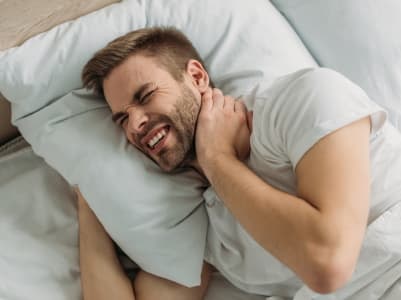
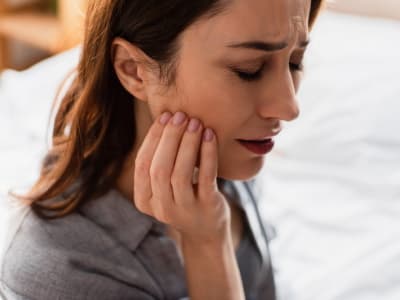
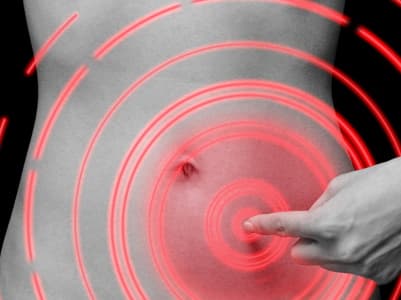
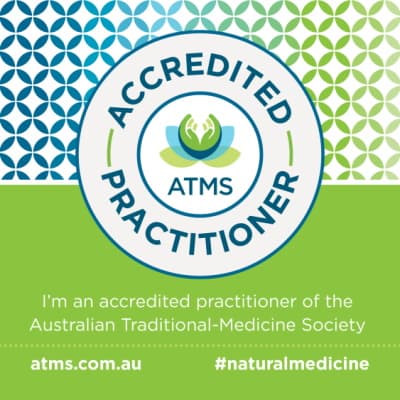
- Crosses = trigger points in sternocleidomastoid muscle
- Brown spots = referred headache